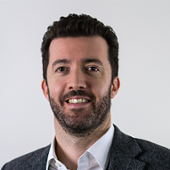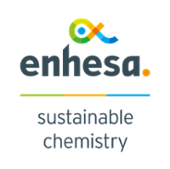Agenda
Please note: all timings are listed in CEST, to view start times in your local time zone, please click here.
-
Registration and coffee
-
Welcome and introduction
-
KEYNOTE: Tools for PFAS prevention
- Identifying alternatives to PFAS in different products, uses and sectors
- Opportunities and gaps in the current policy framework
- Catalysing the market to safer alternatives
- Session 1: Latest EU level updates
-
Overview of recent EU PFAS developments with particular focus on litigation in Europe
- Recent EU PFAS developments
- Why litigation is now an option for PFAS-affected communities around Europe
- What litigation looks like in key cases (Sweden, Belgium, the Netherlands, France, Italy)
- Likely impacts and future of PFAS litigation in Europe
-
UPFAS – update from the dossier submitters
- Findings from the public consultation
- Next steps (ECHA and dossier submitters)
- Discussions in scientific committees
-
Q&A session
-
Refreshment break
- Session 2: Recent member state developments
-
Overview of national PFAS developments in Denmark with a special focus on the national action plan
- General overview of the national PFAS developments – a timeline of events and related activities to prevent PFAS pollution
- The Danish national action plan – preventing, containing and cleaning up PFAS pollution
- Future outlook – what are the next steps and how do we continue the transition towards a PFAS-free environment
-
Technical and economic effects of a PFAS ban – study of users in Austria
- Major relevant sectors which use PFAS
- Functional necessity of the PFAS use in the respective sectors and possible substitutes
- Main consequences of a PFAS ban in the different applications
-
Q&A session
-
Lunch and networking
-
Demonstration of Enhesa Sustainable Chemistry service
- Session 3: Challenges and solutions for capturing PFAS
-
PFAS on the front-line
Tools for PFAS prevention
- Experiences from enforcement of PFAS restrictions and their (future) needs
- Conclusion on what is needed and what is proposed for enforcement
Methods and their development for PFAS analyses in articles and chemical products
- Overview on PFAS analytical methods (total fluorine content, non-target and suspect screening, targeted methods, other analytical methods)
- Summary of advantages, disadvantages and application for the techniques of PFAS/fluorine determination
- Limit of quantification and measurement uncertainty – PFAS analytical methods
-
Methods and their development for PFAS analyses in articles and chemical products
- Analytical methods to screen articles and chemical products for PFAS content, including polymeric PFAS
- Results from case studies applying these methods
- Proposed workflow for enforcement of a broad PFAS restriction
-
Short introduction to the panel discussion
Key takeaways on method development for companies
-
Q&A and panel discussion
- When is method development needed? Please walk us through the different considerations from your perspective!
- What have you learned from method development collaborations between research institutes and companies?
-
Refreshment break
- Session 4: Sectoral responses and solutions
-
The IKEA journey to phase out PFAS
- Screening for PFAS and the phase-out process
- The impact of legislation on industry
- Main takeaways and future challenges
-
Next steps towards PFAS-free electronics
- How the electronics industry is proceeding with identification and replacement of PFAS
- Can all PFAS be replaced?
- What are the limitations?
-
Identifying PFAS alternatives for more challenging sectors, such as medical devices, green energy, transport and industrial uses
- Details of a recent project conducted by WSP and ChemSec to investigate potential PFAS-free alternatives in several different sectors of use
- Some key insights from the study, including common alternatives identified across these uses, along with their feasibility and limitations
- Remaining challenges for identifying viable alternatives in these sectors and ways to overcome those challenges
-
Q&A session
-
Networking drinks reception
Join us for relaxed networking with drinks and appetizers, alongside our speakers and attendees.
-
Close of conference



.jpg)
_opt-(1).jpg)

.jpg)
.jpg)
.jpg)
.jpg)
.jpg)

-(002).jpg)
.jpg)
